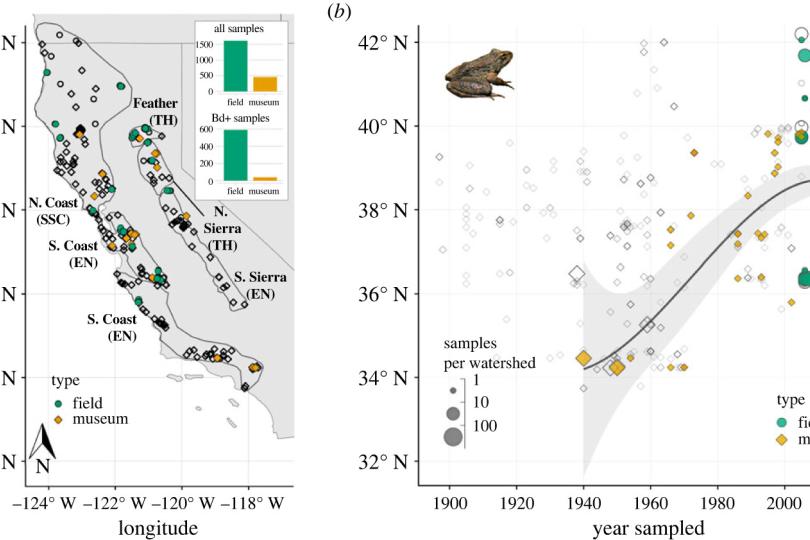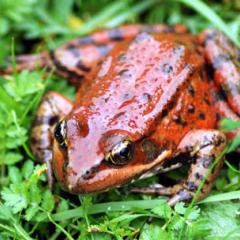Andrea Adams co-authors study on disease and resilience of the foothill yellow-legged frog
“It started with a phone call.” Andrea Adams shared on X about the sudden change of plans for Anat Belasen’s postdoctoral research. The pandemic meant Belasen couldn’t do their planned field work on foothill yellow-legged frogs, so the team tapped into their “network of amphibian researchers” and “unearthed and assembled a large dataset to help paint a bigger picture of disease for this species,” Adams said.
Their resulting research, published in Royal Society Open Science, discovered the historical spread and contemporary seasonality of chytrid (Bd) infections in this federally endangered frog. The project is “the most comprehensive study to date of disease dynamics in foothill yellow-legged frogs,” according to UC Santa Barbara News.
“Many foothill yellow-legged frog field researchers had data that they weren’t actively analyzing,” co-author Adams told UC Santa Barbara News. “And so we were able to bring all of this data together and get it into a usable format that we could use to paint a much bigger picture of what is, and was, going on with Bd in this species.”
The study found “a south-to-north spread of Bd detections beginning in the 1940s and increase in prevalence from the 1940s to 1970s, coinciding with extirpation from southern latitudes,” and “eight high-prevalence geographical clusters through time that span the species' geographical range.” Through a holistic assessment of relationships between infection risk, geographical context and time, they identified the locations and time periods where Bd mitigation and monitoring will be critical for conservation of this imperiled species.
Read the open source paper here, and learn more in the UC Santa Barbara story.


